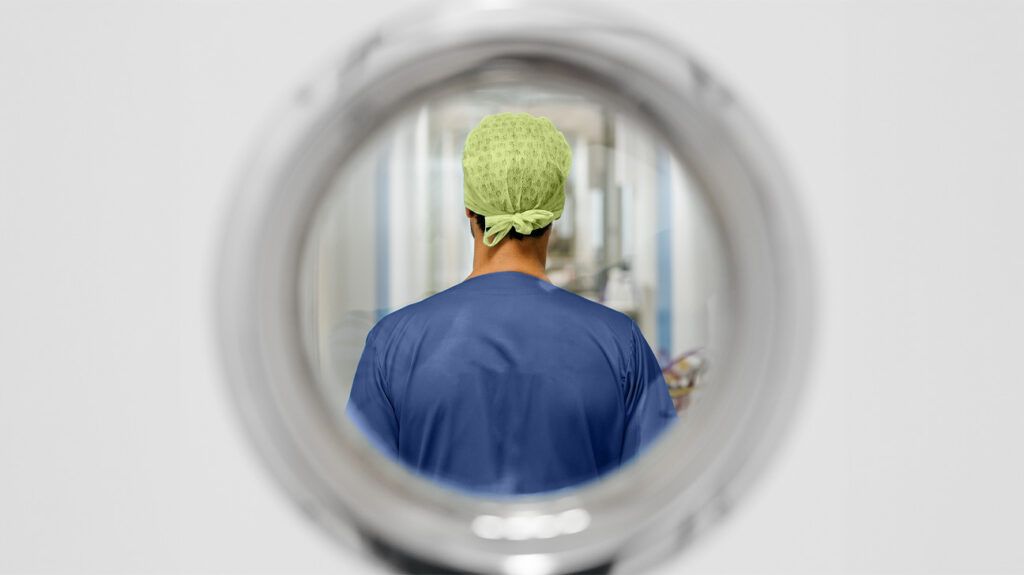Lung nodule surgery involves removing atypical masses of tissue in the lungs. A doctor will discuss if surgery is a possible treatment for a person with lung nodules and which type is suitable.
Lung nodules are small masses of dense tissue in the lungs that can be either cancerous or noncancerous. When doctors find a lung nodule, they often monitor them over time for any changes. However, in certain cases, surgical intervention becomes necessary.
This article provides a comprehensive overview of lung nodule surgery, including its purpose, eligibility criteria, what to expect, and the recovery process.

Lung nodule surgery, or thoracic surgery, involves removing atypical growths in the lung tissue. These growths are known as lung nodules. Some lung nodules are noncancerous and may not require surgery.
Doctors usually recommend lung nodule surgery in the following cases:
- the nodule is cancerous
- there is rapid growth of the nodule
- the nodule causes symptoms such as pain or difficulty breathing
Lung cancer is the
There are different types of lung nodule surgeries. These include:
- Thoracotomy or open lung surgery: This is an invasive type of surgery that involves a larger incision between the ribs to access the lung or other organs in the thoracic cavity. A doctor inserts a tube through the windpipe to deflate the lung that surgeons are operating on. The procedure may vary slightly according to the different types of thoracotomy a person has.
- Video-assisted thoracoscopic surgery (VATS): This
minimally invasive procedure uses a small camera and surgical instruments that a doctor inserts through small incisions in the chest. Recovery times are often quicker than traditional open thoracotomy. - Robotic-assisted thoracic surgery (RATS): This is a type of minimally invasive surgery in which a surgeon uses robotic technology to allow for better precision and control during the procedure.
A doctor will evaluate whether someone can have lung nodule surgery on a case by case basis. Various factors, including the person’s overall health and the size, location, and characteristics of the nodule, can affect this decision.
Usually, a person who has the following characteristics may be eligible for lung nodule surgery:
- nodules are larger than
8 to 10 millimeters , especially if they show signs of rapid growth, as the probability of lung cancer is 9.7% - there are accompanying symptoms such as persistent cough, chest pain, or difficulty breathing
- there is a history of smoking or exposure to carcinogens, which can increase their
risk of lung cancer
The exact type of surgery a person with lung nodules has depends on what their doctor advises. A person can expect:
Before
Patients will undergo several pre-operative tests,
These assessments can help determine the nodule’s characteristics and a person’s lung health. Additionally, according to the results, a doctor may choose an appropriate surgery type.
A surgeon will talk about the procedure, potential risks, and post-operative care beforehand.
During
During the procedure, a surgeon will place the patient under general anesthesia. Depending on the type of surgery, the surgeon will make the necessary incisions and remove the nodule.
The duration of the surgery varies. Generally, minimally invasive surgeries, such as VATS or RATS, lead to faster recovery and shorter hospital stays.
After
Following surgery, healthcare professionals will closely monitor patients.
Pain management, breathing exercises, and monitoring for complications are essential components of care after surgery. Most patients can expect to stay in the hospital for
Recovery from lung nodule surgery involves several stages.
Initially, people may experience discomfort, fatigue, and limited mobility. Pain management strategies — such as medications and breathing exercises — are crucial to aid recovery.
During this recovery period, it is essential to follow the surgeon’s instructions regarding the following:
- wound care
- activity restrictions
- follow-up appointments
It may take several weeks to recover after lung nodule surgery. Regular follow-ups and imaging tests are necessary to monitor lung function and check that the nodules have not returned.
Like all surgeries, lung nodule surgery comes with various risks and benefits.
The risks or the potential for complications may vary from person to person. Certain factors, such as personal risk factors, overall health status, and procedure type, can influence this.
A doctor will discuss the risks and benefits with the person undergoing surgery.
Some risks may include:
- complications from anesthesia
- infection or bleeding
- persistent pain or discomfort
- reduction in lung function, especially if a surgeon removes a large portion of lung tissue
- atypical heartbeats
- air leakage from the lungs
Some benefits may include:
- early detection and removal of potentially cancerous nodules
- relief from symptoms, such as pain and difficulty breathing
- improvement in lung function and quality of life
Minimally invasive surgical options also include benefits such as faster recovery times and shorter hospital stays.
Below are answers to common questions about lung nodules.
Can lung nodules be surgically removed?
Yes, lung nodules can undergo surgical removal. In fact, doctors may recommend this approach if they suspect nodules are cancerous, growing rapidly, or causing unpleasant symptoms.
Surgical removal allows for a definitive diagnosis and treatment.
What is the recovery time for lung nodule surgery?
The recovery time varies depending on the type of surgery and the patient’s health. Generally, full recovery may take
At what size should a nodule be removed?
Doctors recommend that nodules larger than
How long do you stay in hospital after lung surgery?
Hospital stays following lung surgery can typically range from
Lung nodule surgery is a crucial procedure for diagnosing and treating atypical lung growth.
Doctors may recommend this surgery if they suspect lung nodules are cancerous, growing rapidly, or causing unpleasant symptoms, such as difficulty breathing or pain.
Like all surgeries, lung nodule surgery has various risks and benefits. A doctor will discuss the options, risks, outlook, and what to expect beforehand. Full recovery may take weeks or months.
